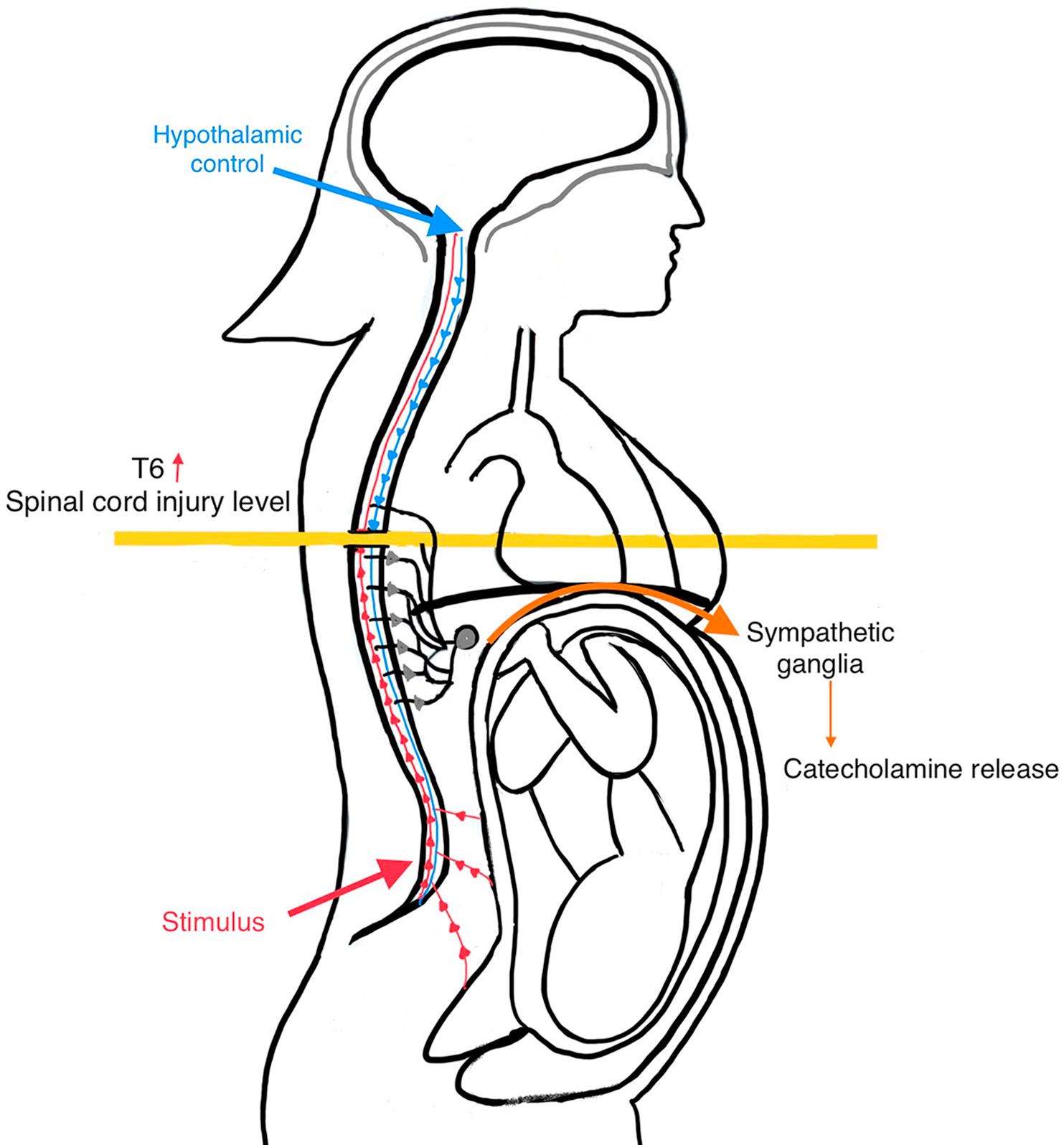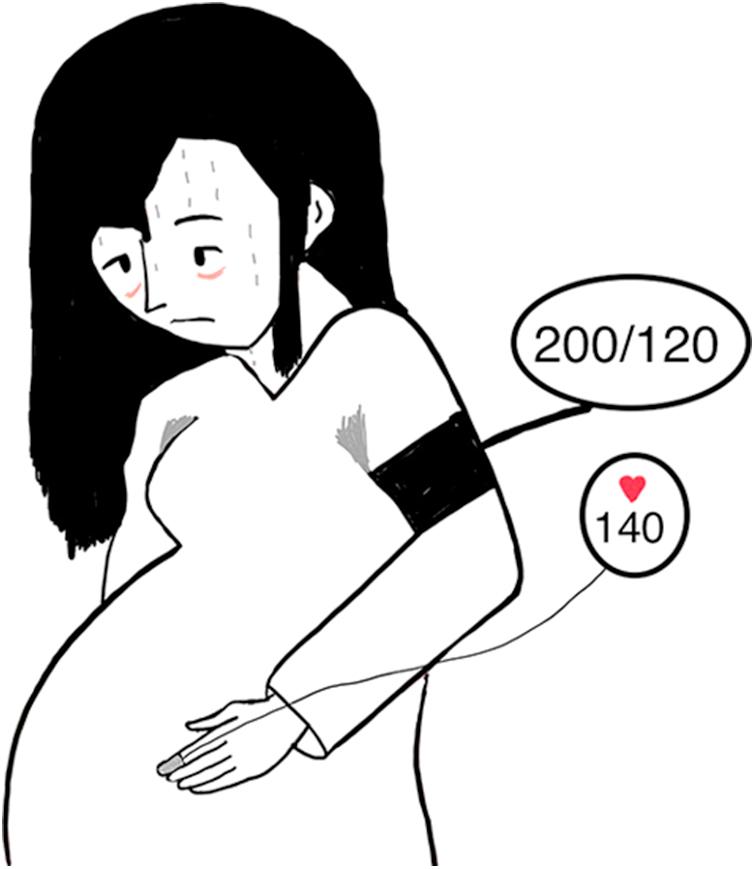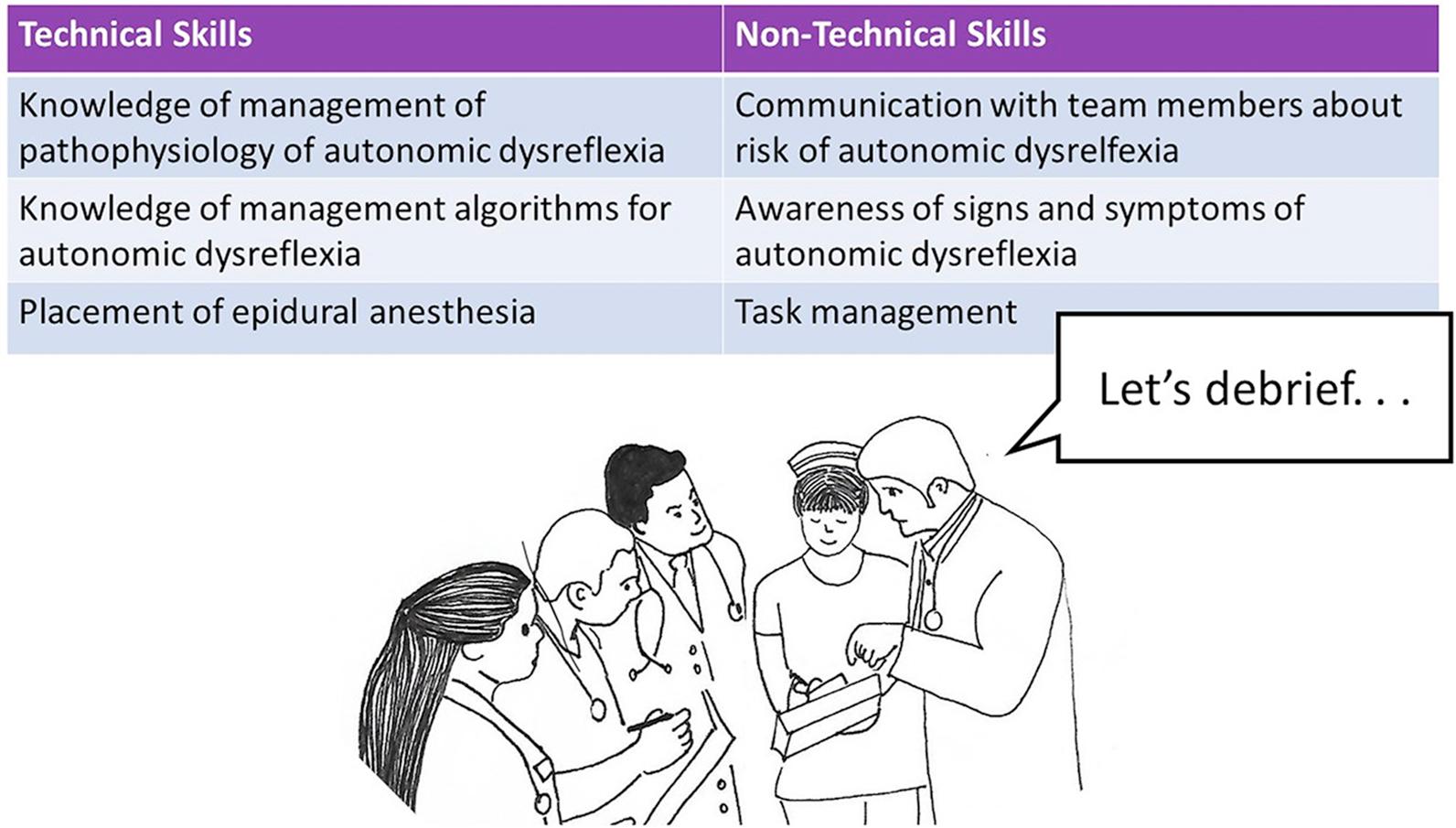Physical Address
304 North Cardinal St.
Dorchester Center, MA 02124
Describe the pathophysiology of autonomic dysreflexia.
Recognize signs and symptoms of autonomic dysreflexia.
Describe prevention and treatment of autonomic dysreflexia in labor.
Occurs in 85% of women with spinal cord injury at level of T6 or above
When the woman experiences a painful stimulus below the level of the spinal injury (such as from contractions or even a full bladder), she may not be conscious of the pain but it is still perceived by the sympathetic nerve fibers
Because the sympathetic nerve fibers in the spinal cord are separated from their normal inhibition from the brain, the painful stimulus results in a hypersympathetic response ( Fig. 27.1 )

This hypersympathetic response results in dangerously elevated blood pressure, cardiac arrhythmias, and other symptoms ( Fig. 27.2 )


Become a Clinical Tree membership for Full access and enjoy Unlimited articles
If you are a member. Log in here